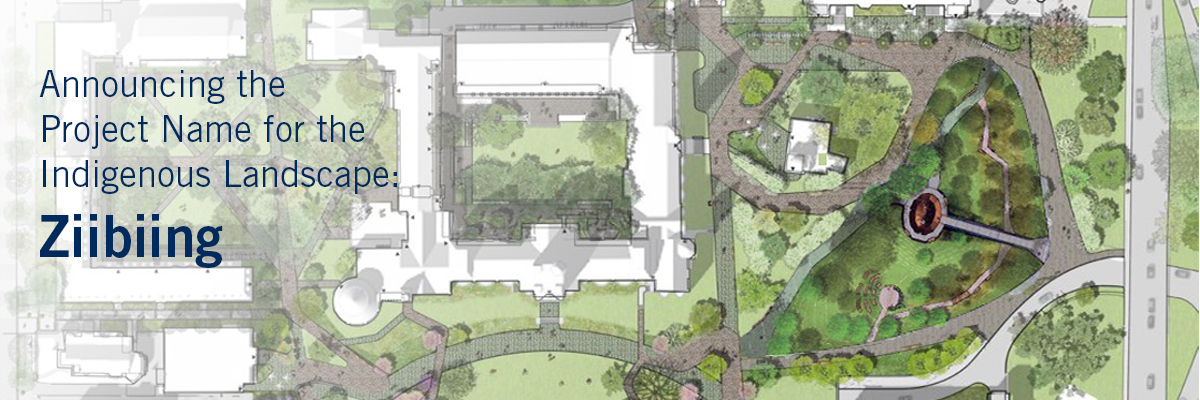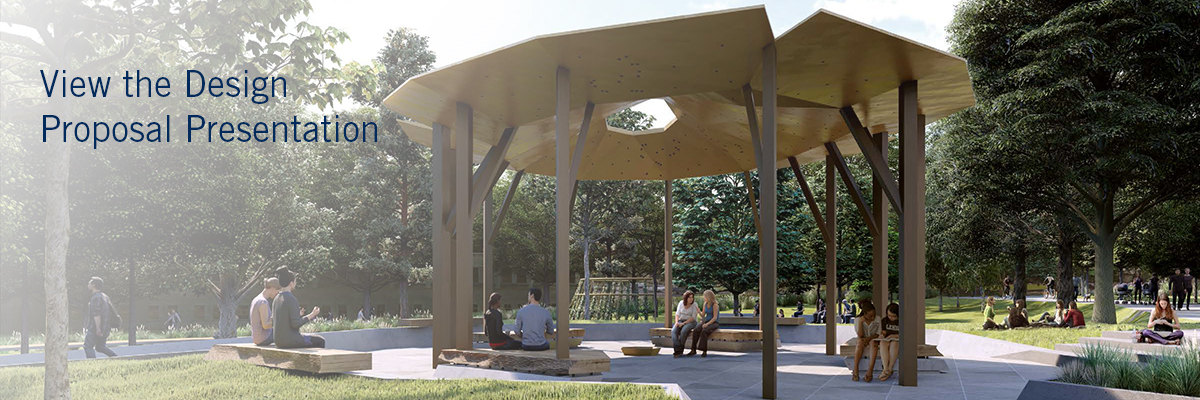The Ziibiing project is under construction. The name ‘Ziibiing’ means ‘river’ in Anishinaabemowin.
The landscape project is part of the University of Toronto’s response to the Truth and Reconciliation Commission of Canada’s Call to Action (PDF, 3.9MB). Brook McIlroy’s Indigenous Design Studio developed the design in consultation with a broad range of Indigenous stakeholders.
Construction Progress Photos
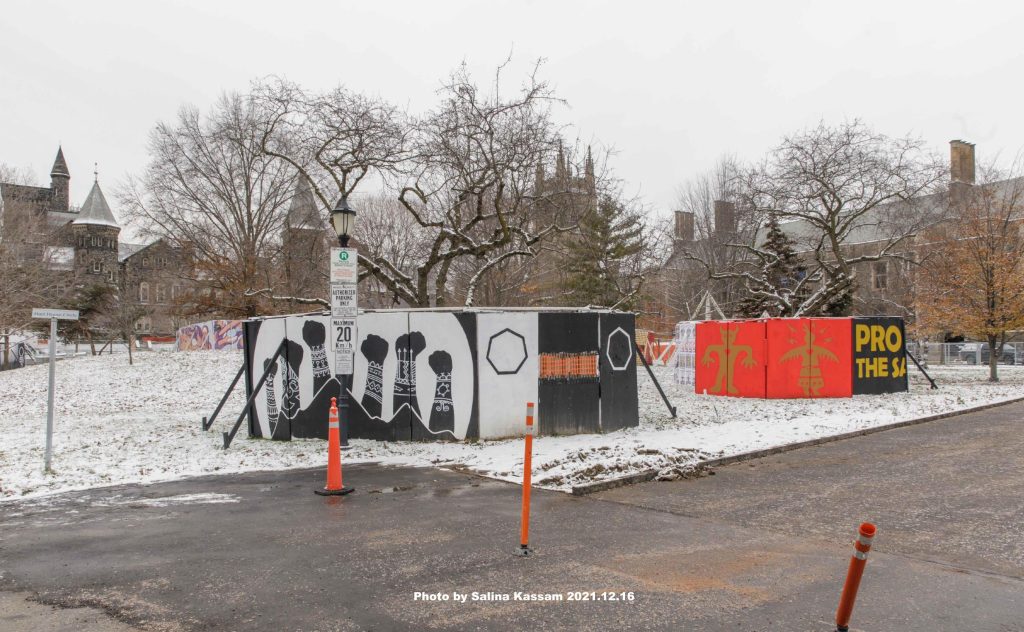
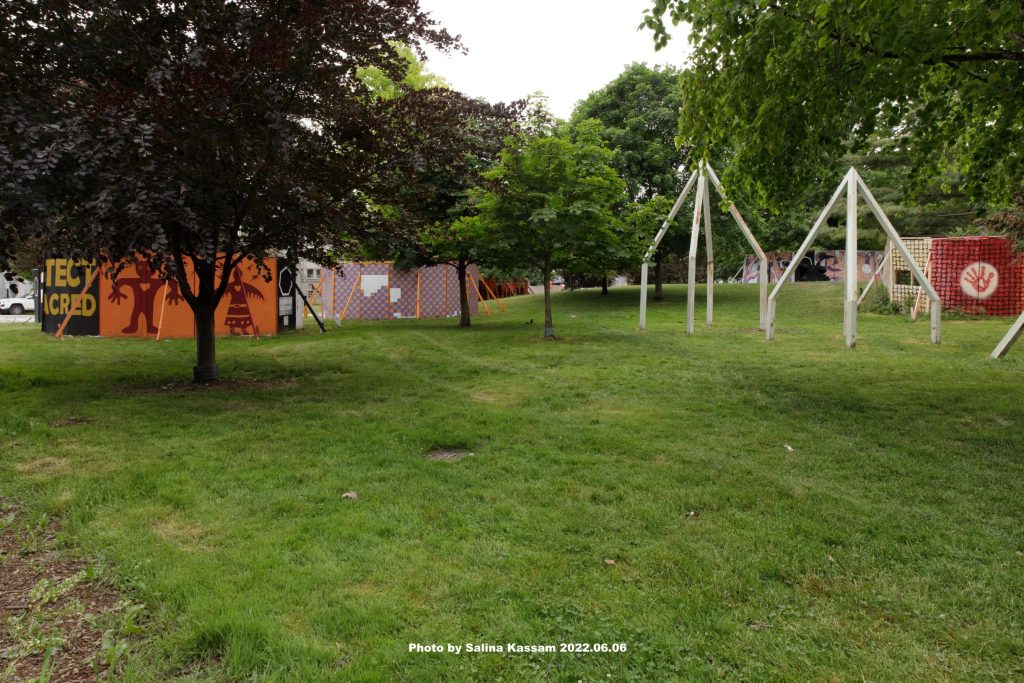
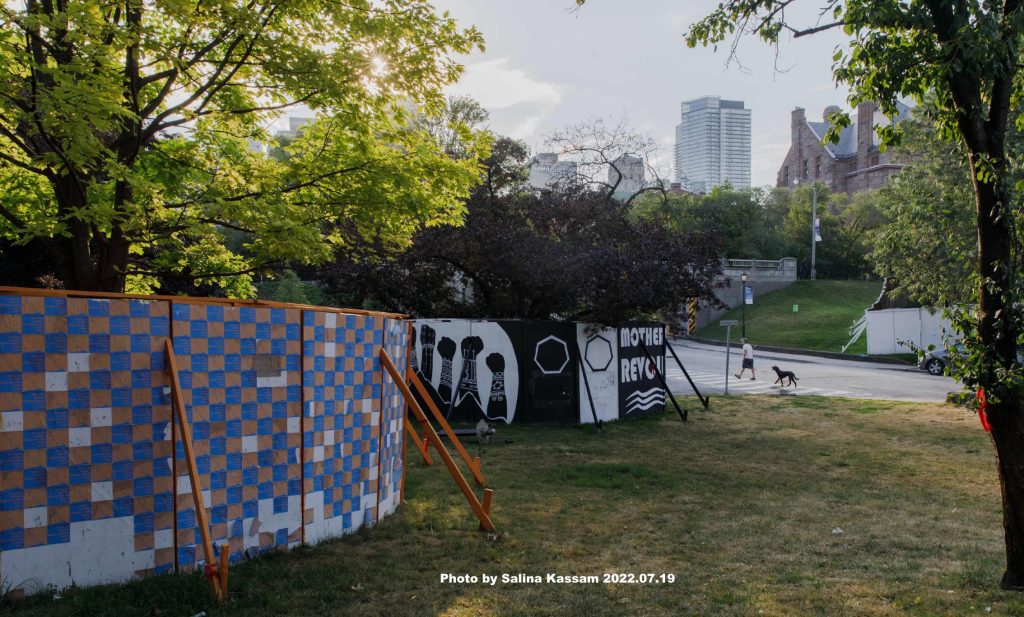
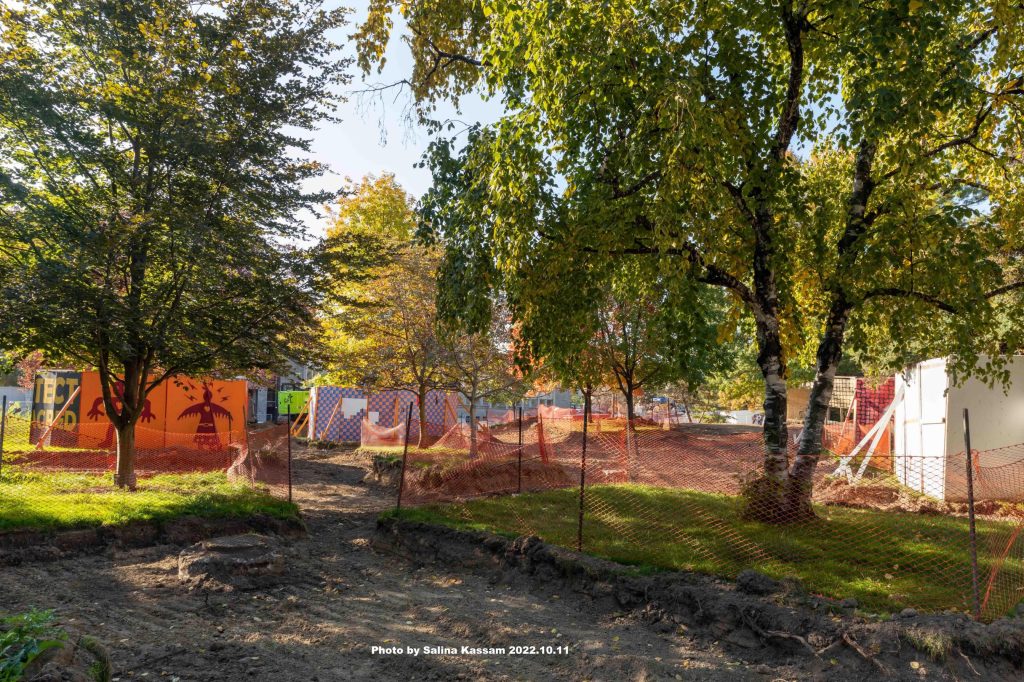
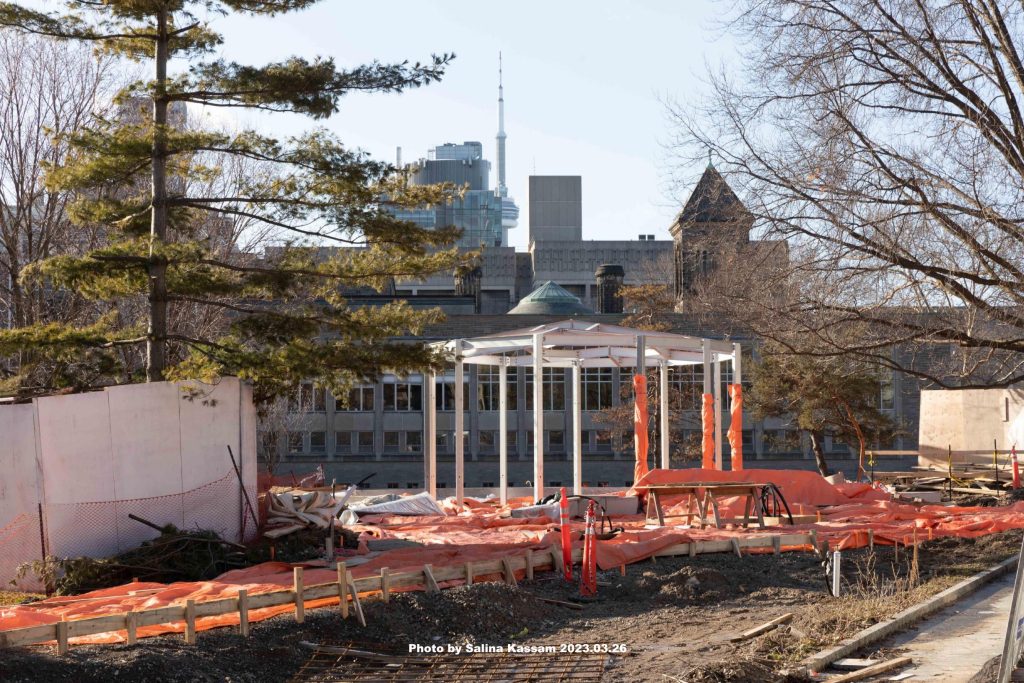
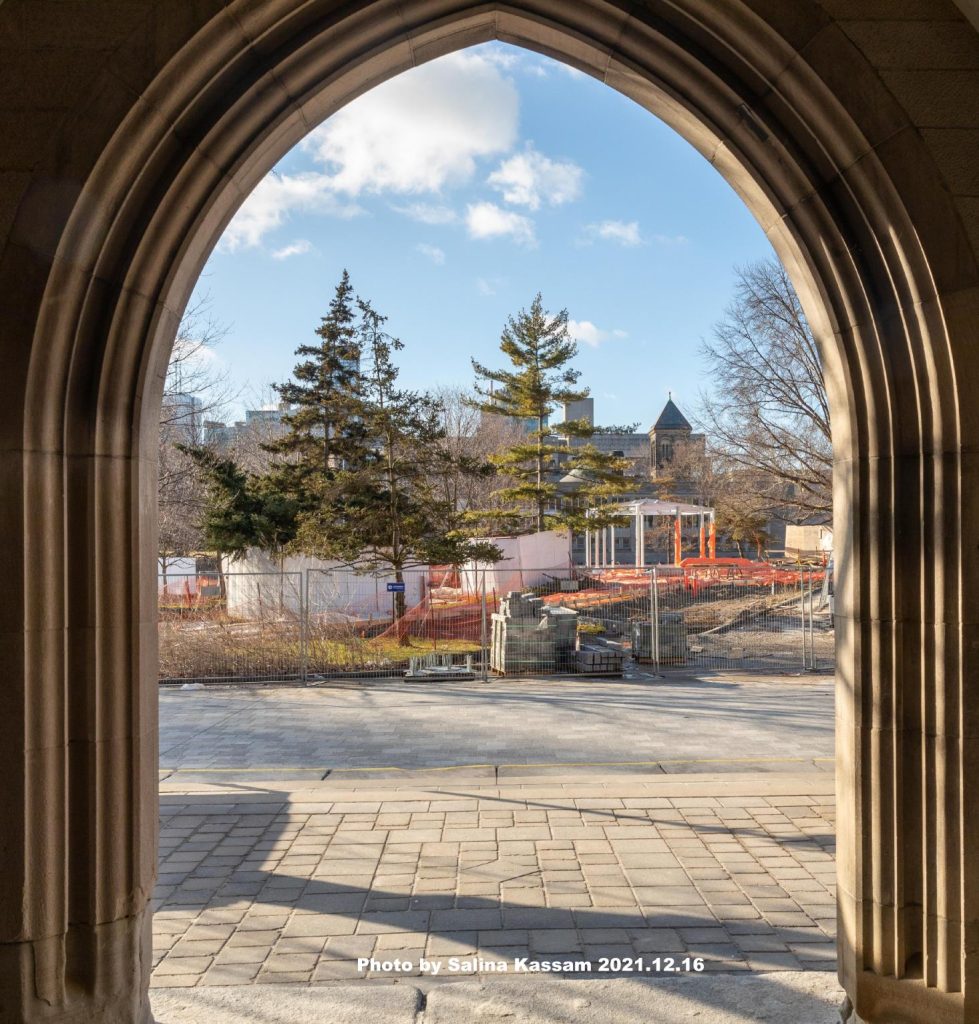
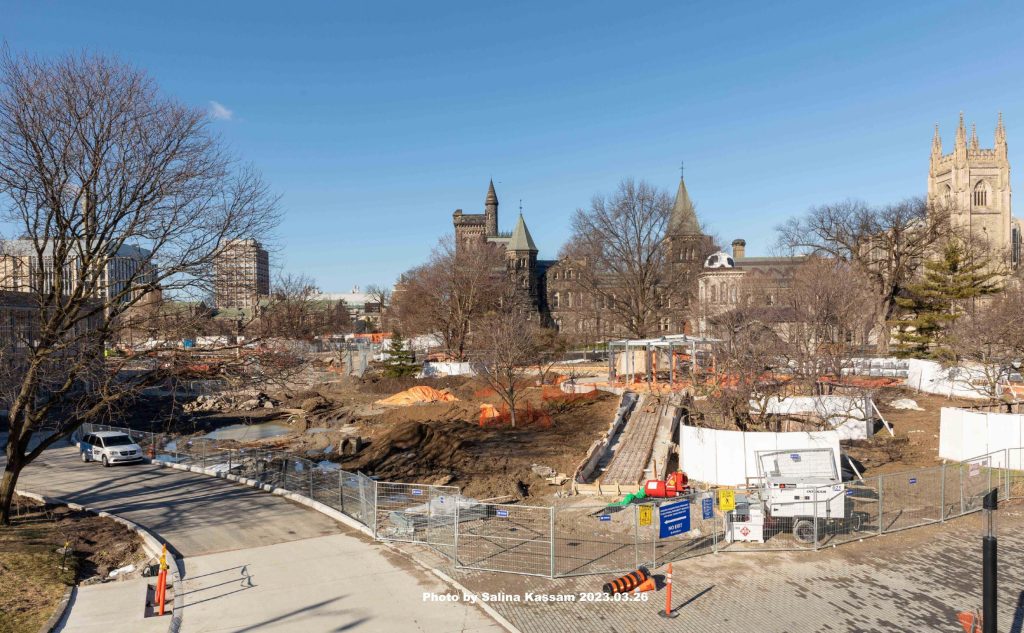
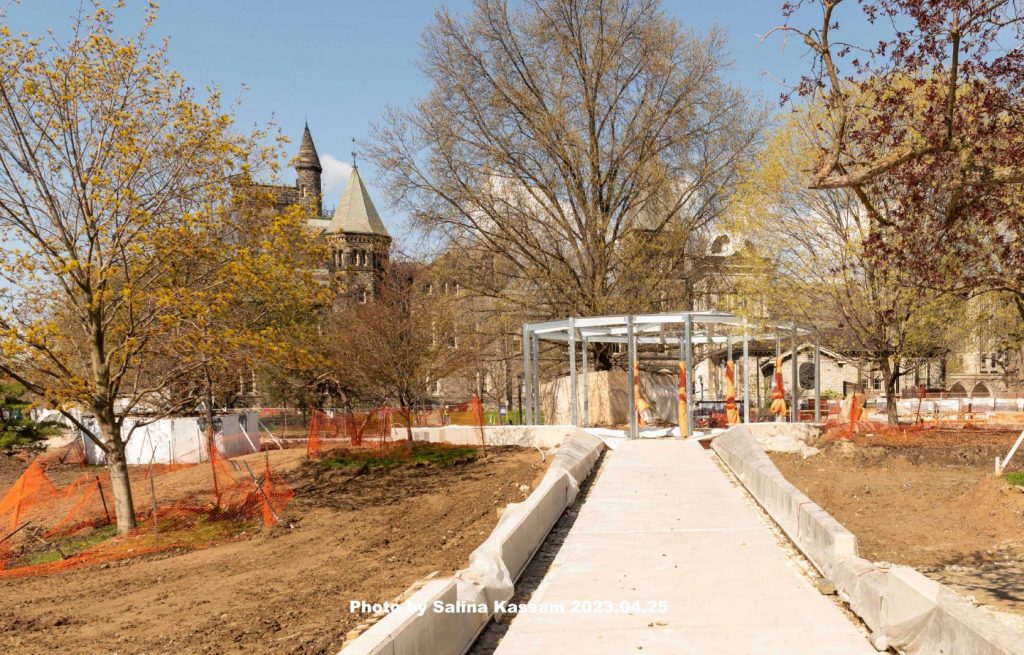
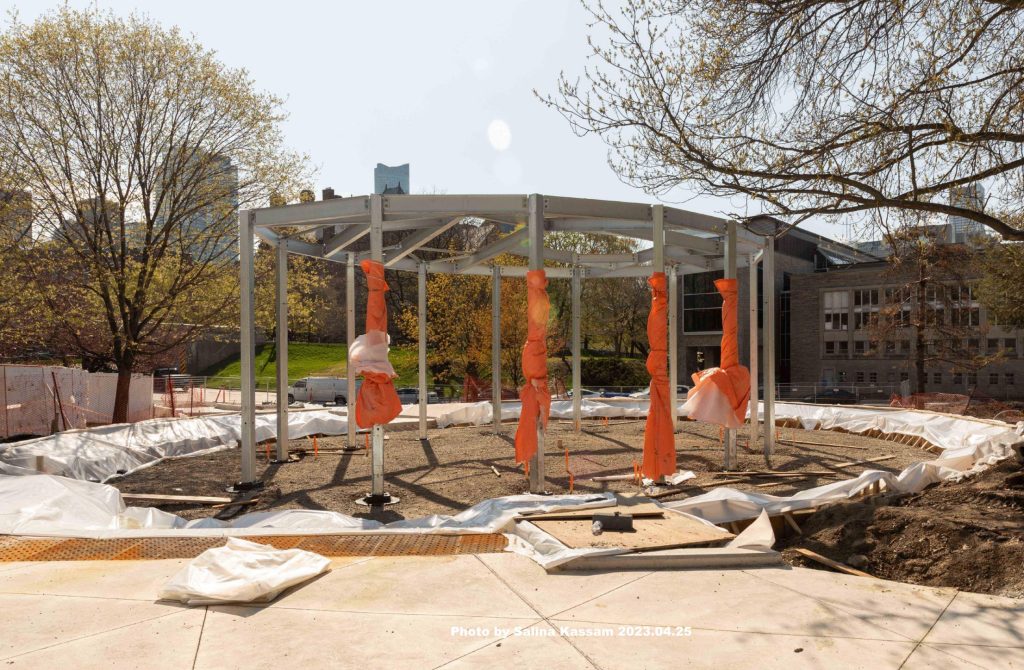
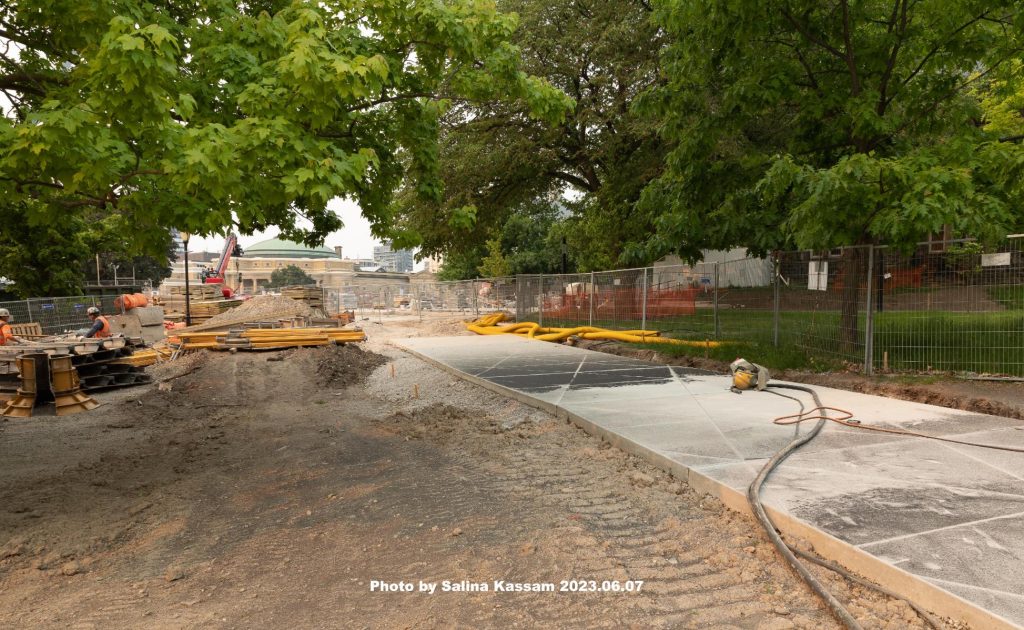
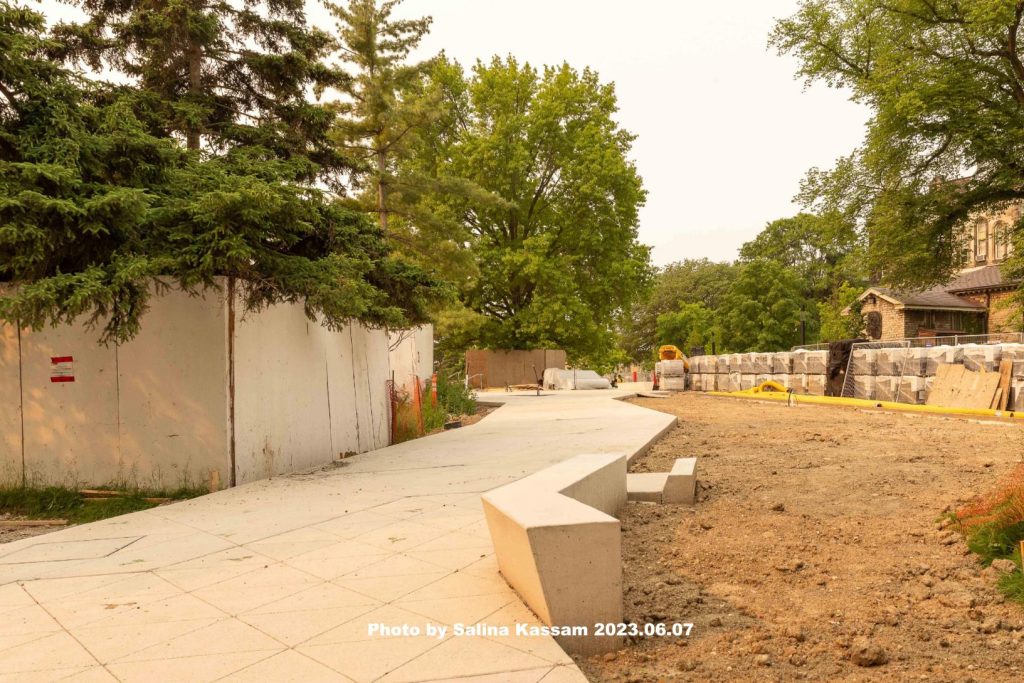
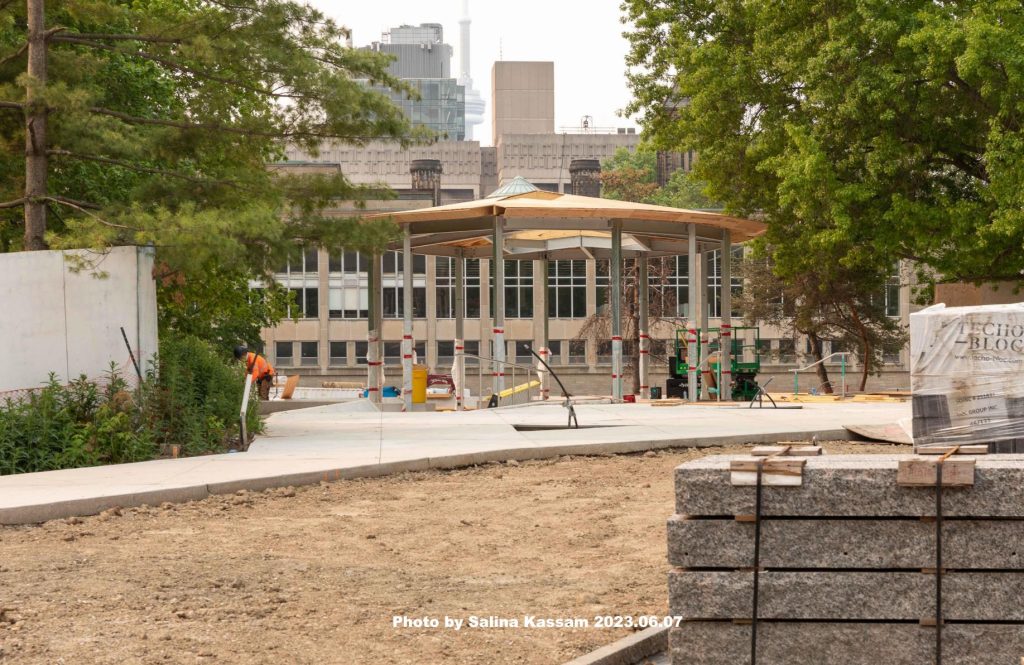
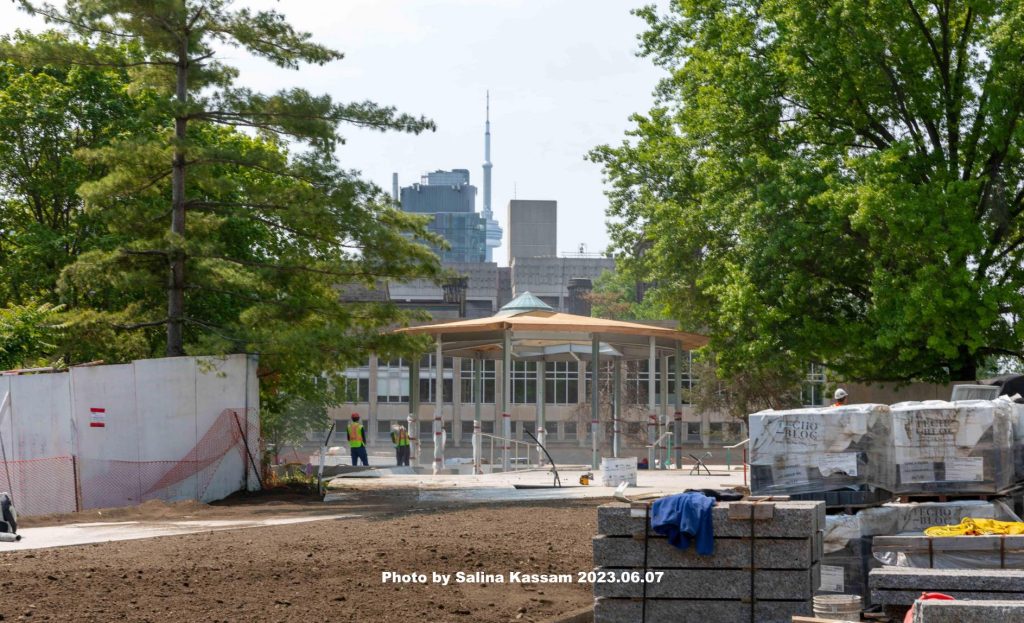
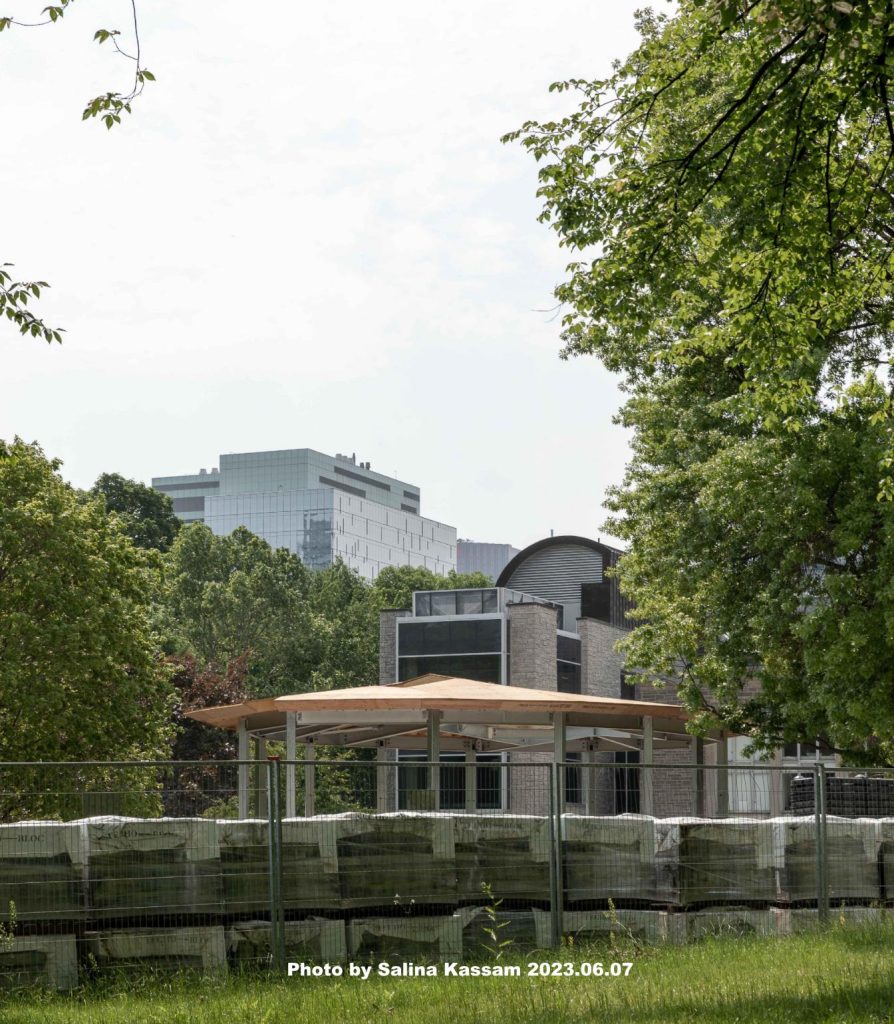
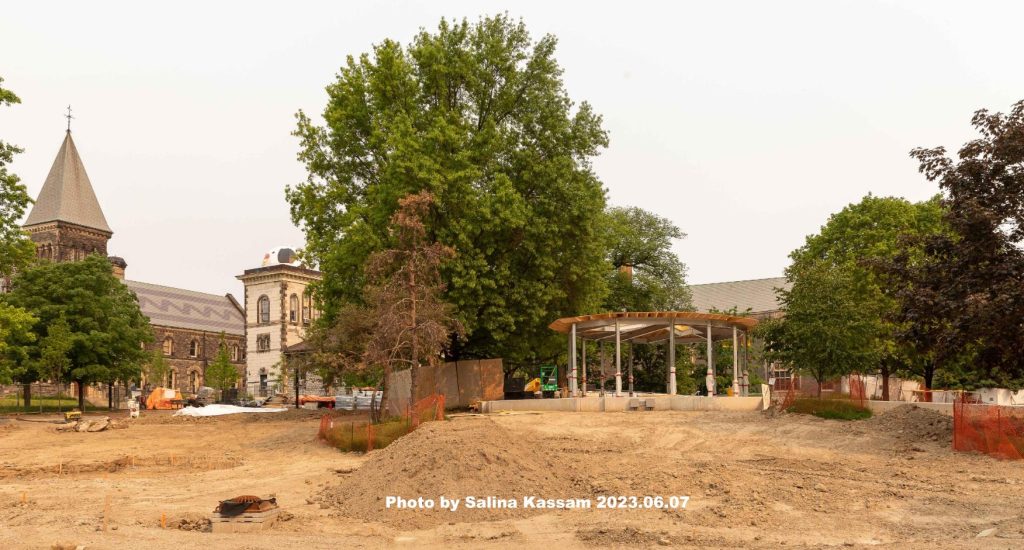
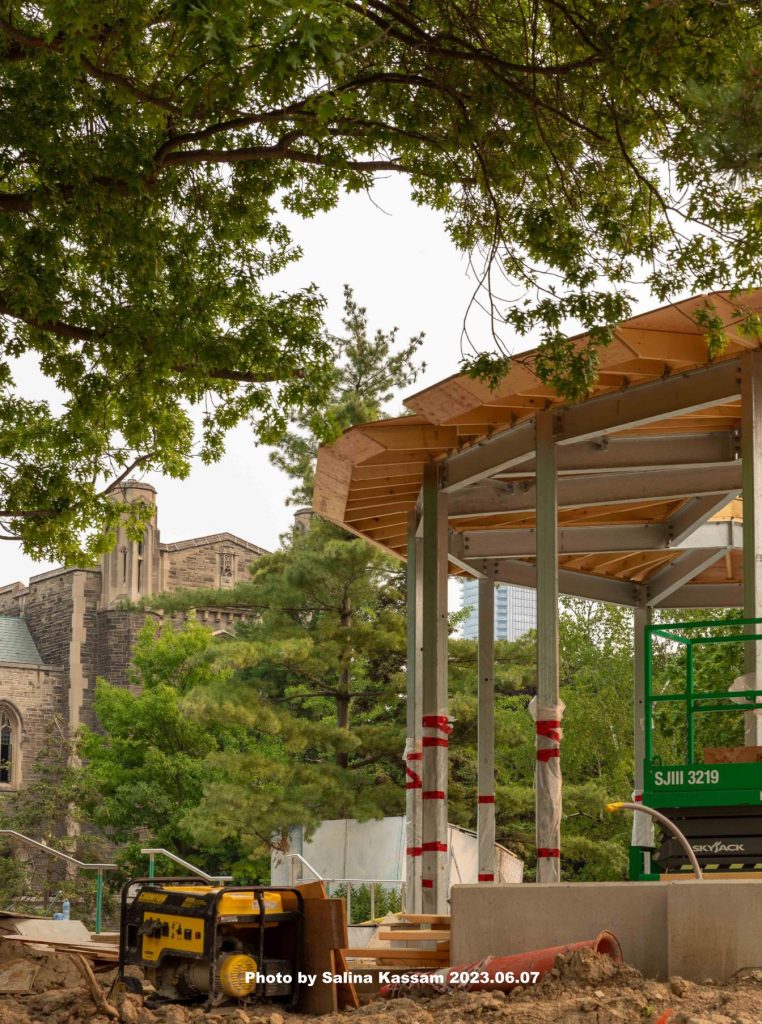
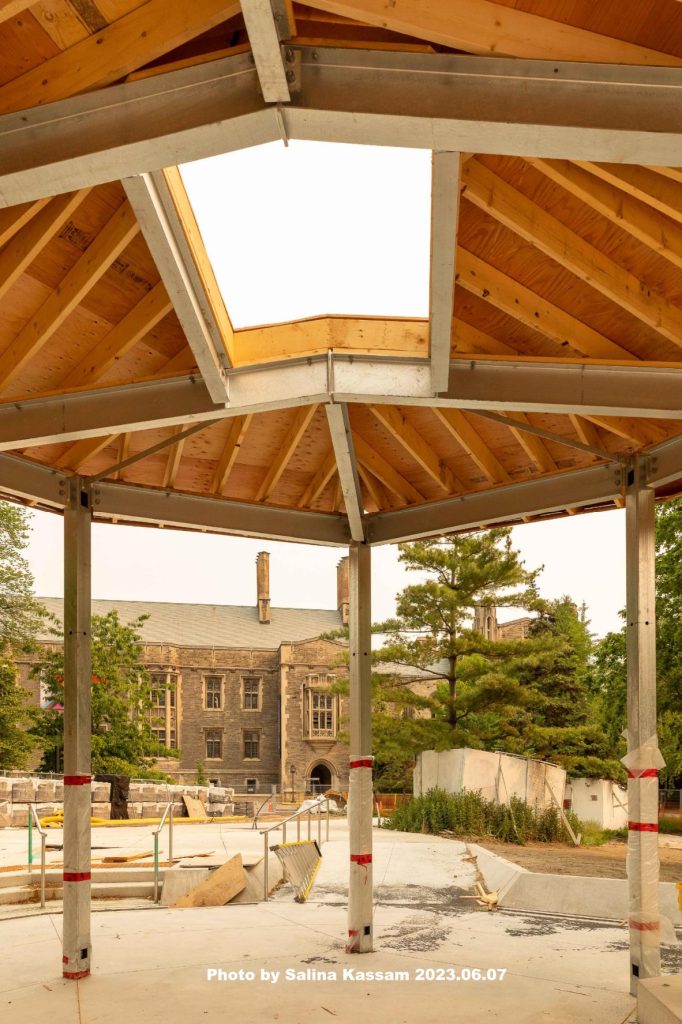
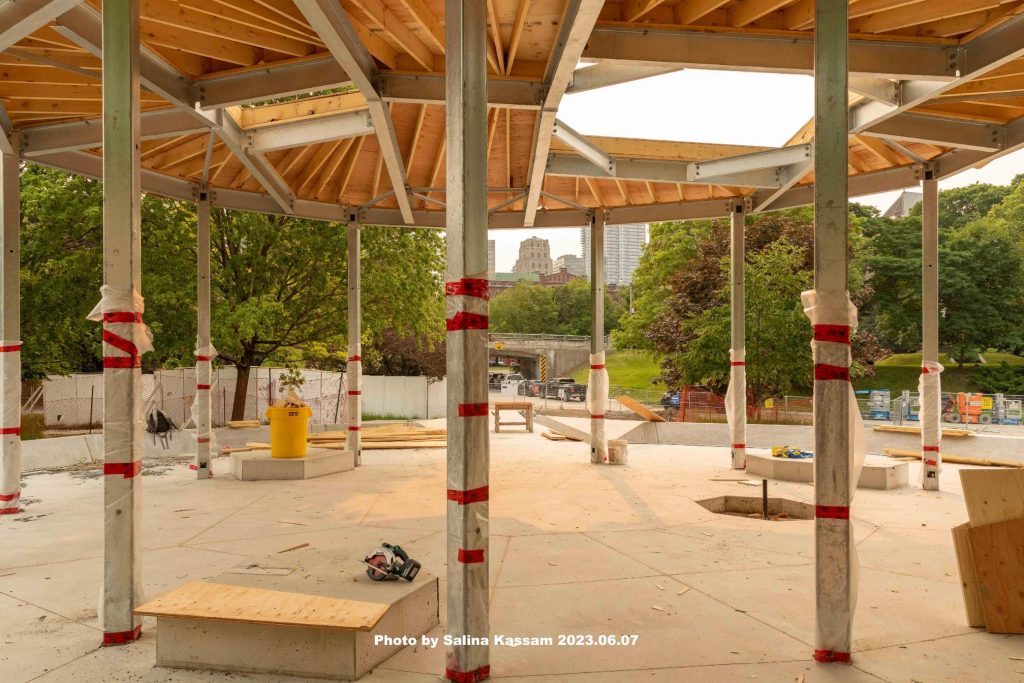
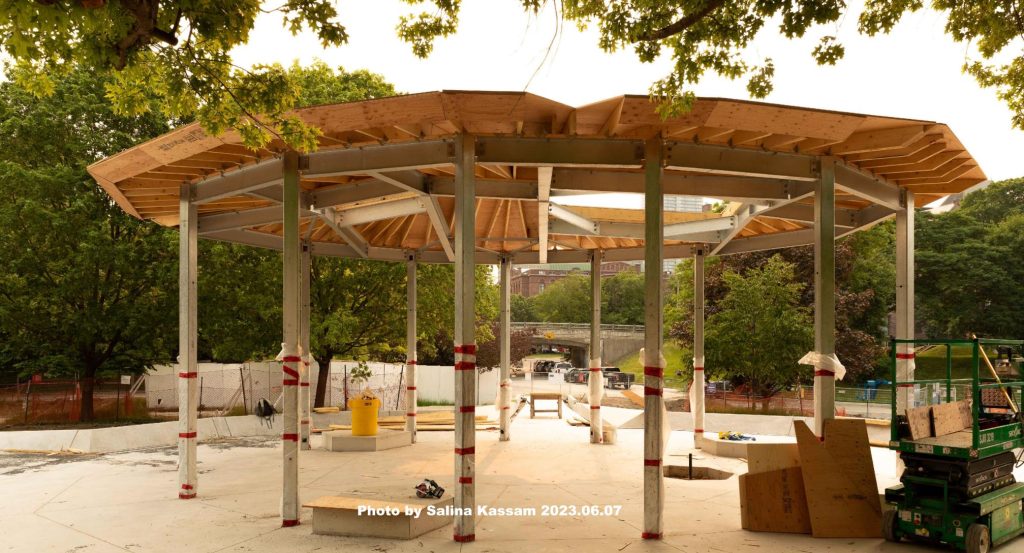
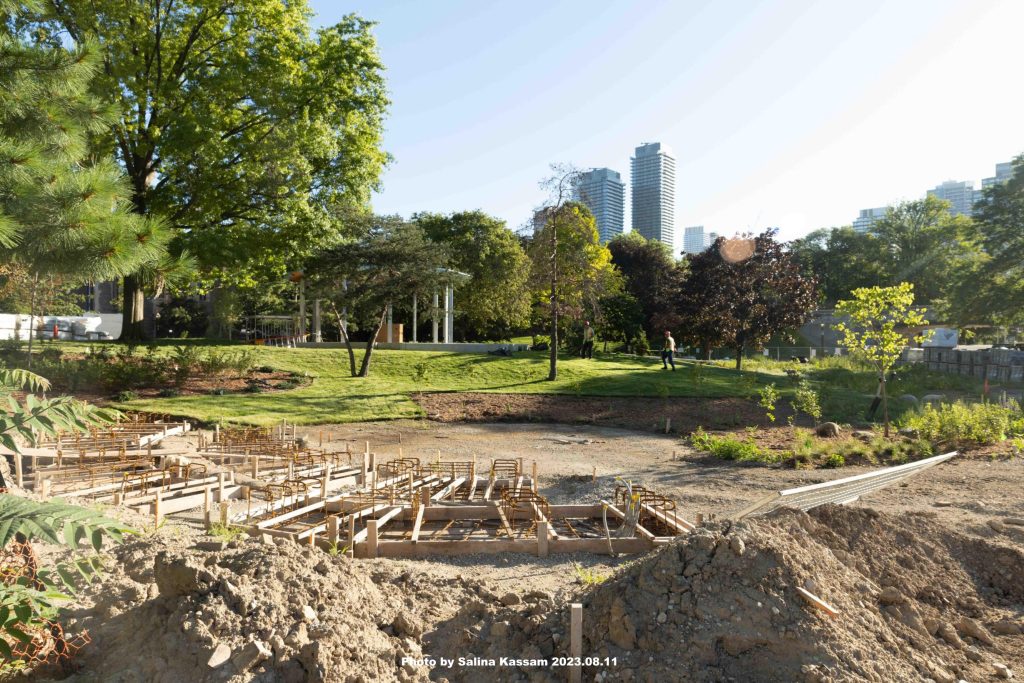
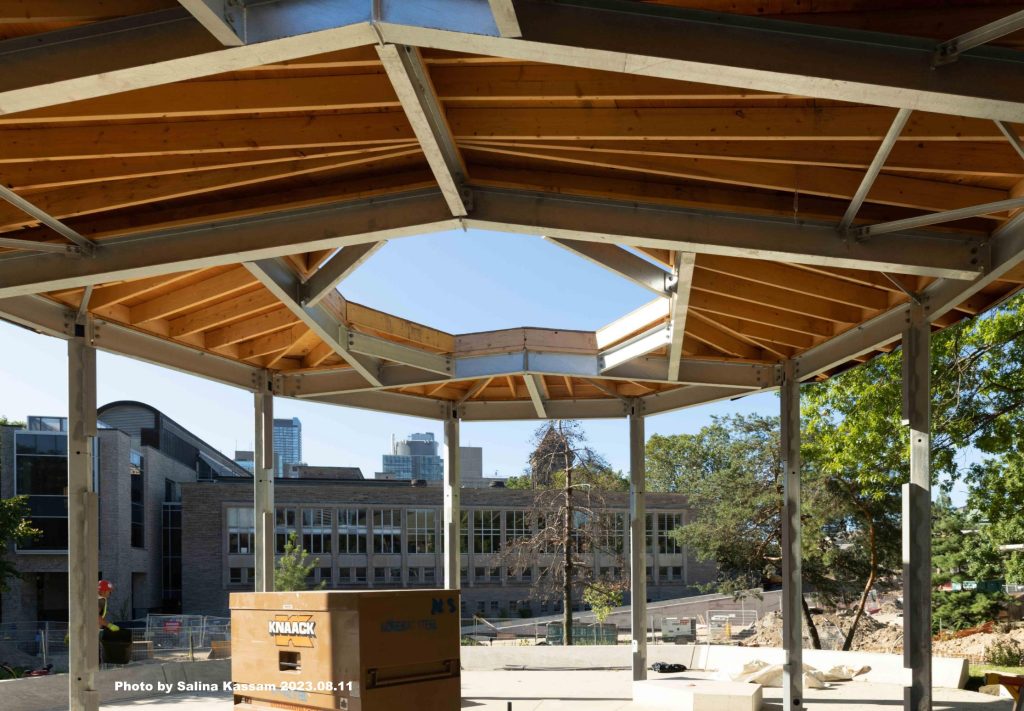
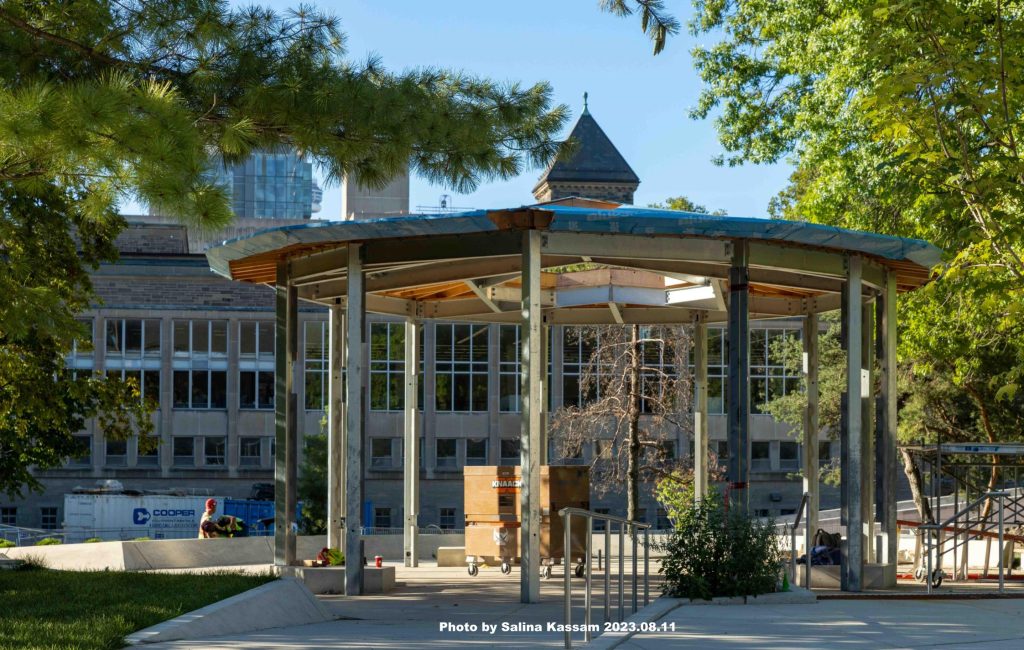
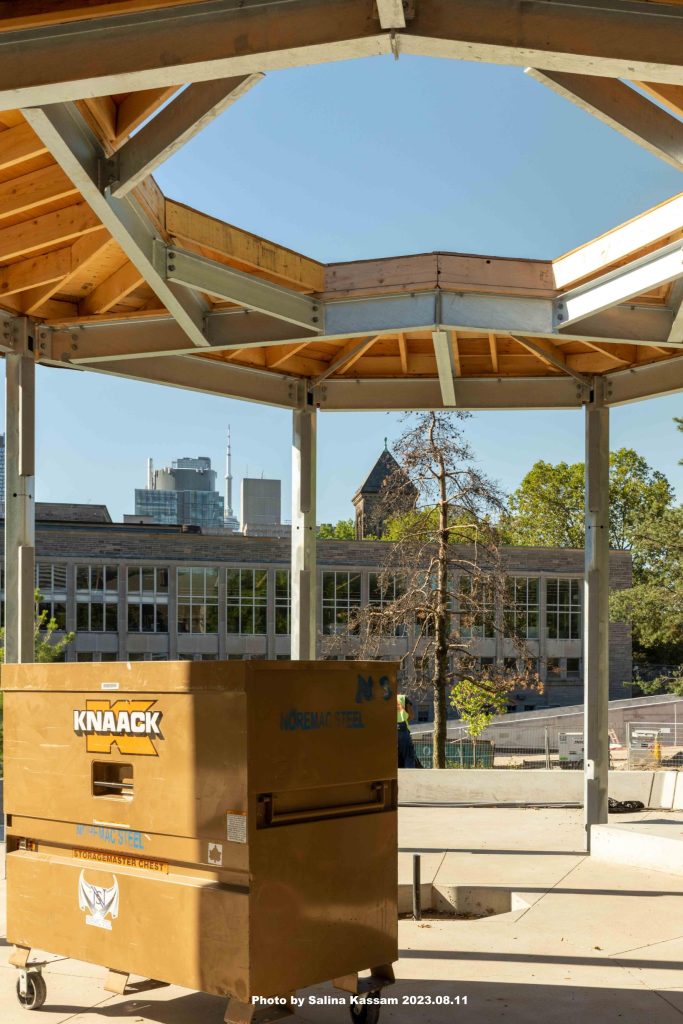
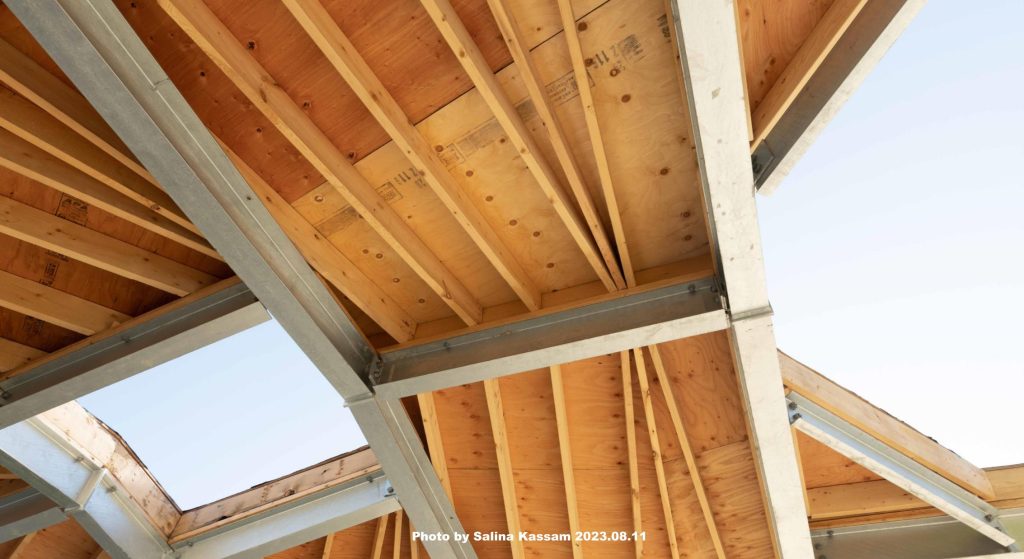
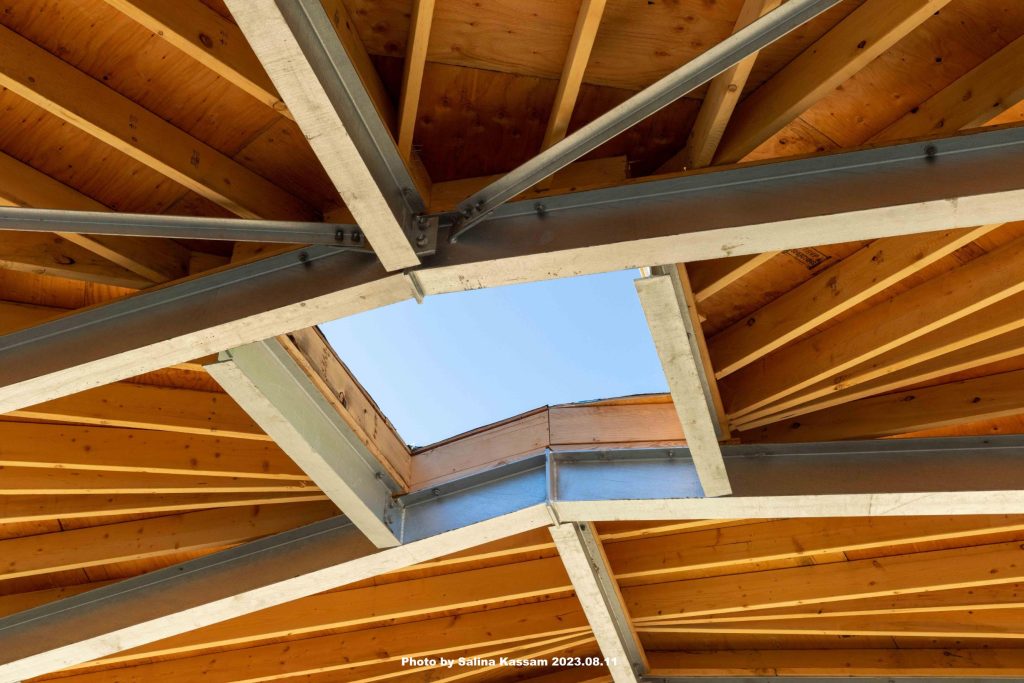

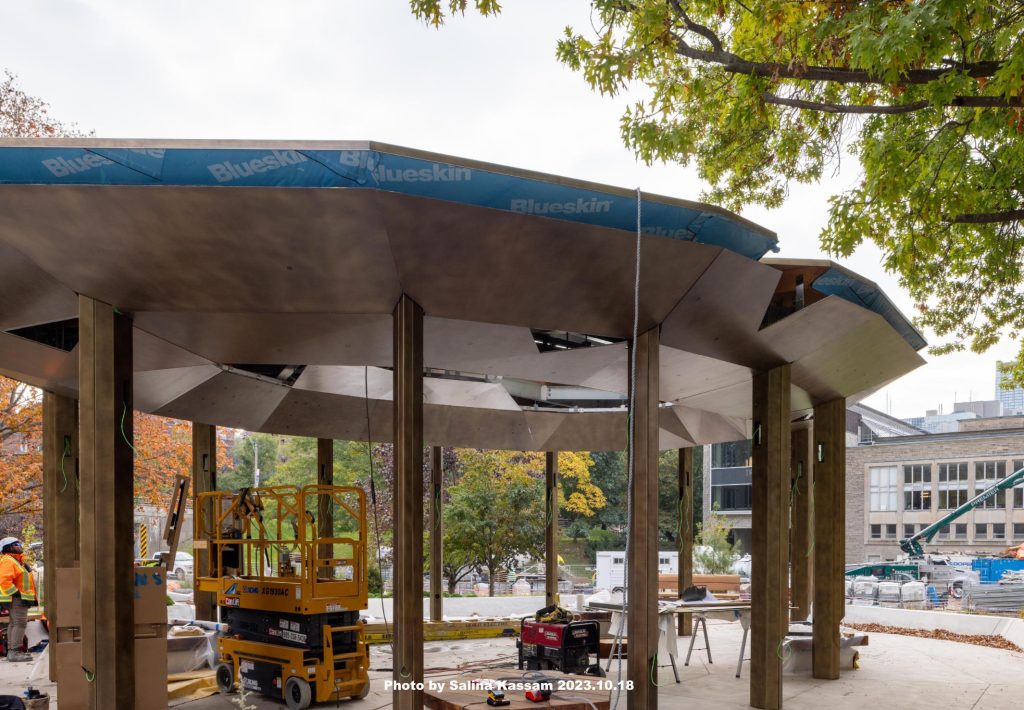
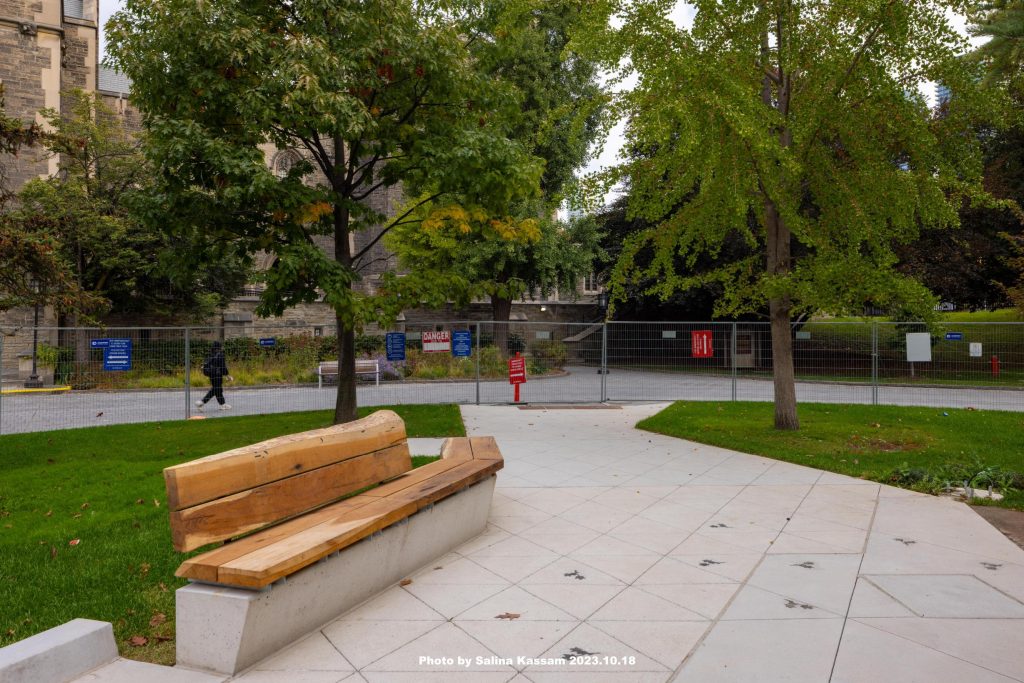
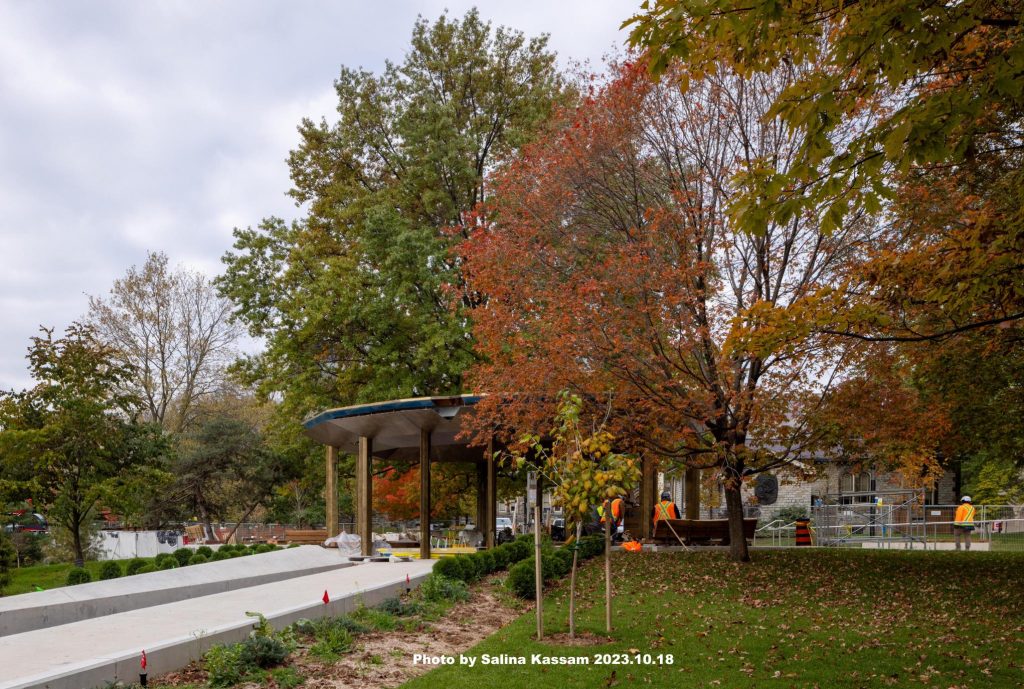
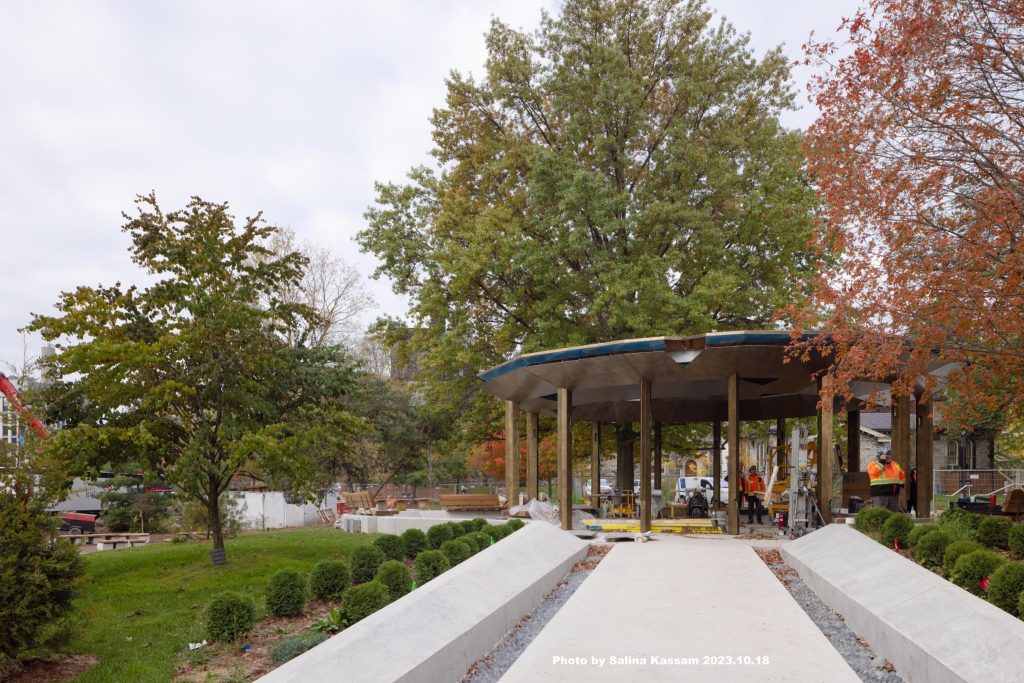
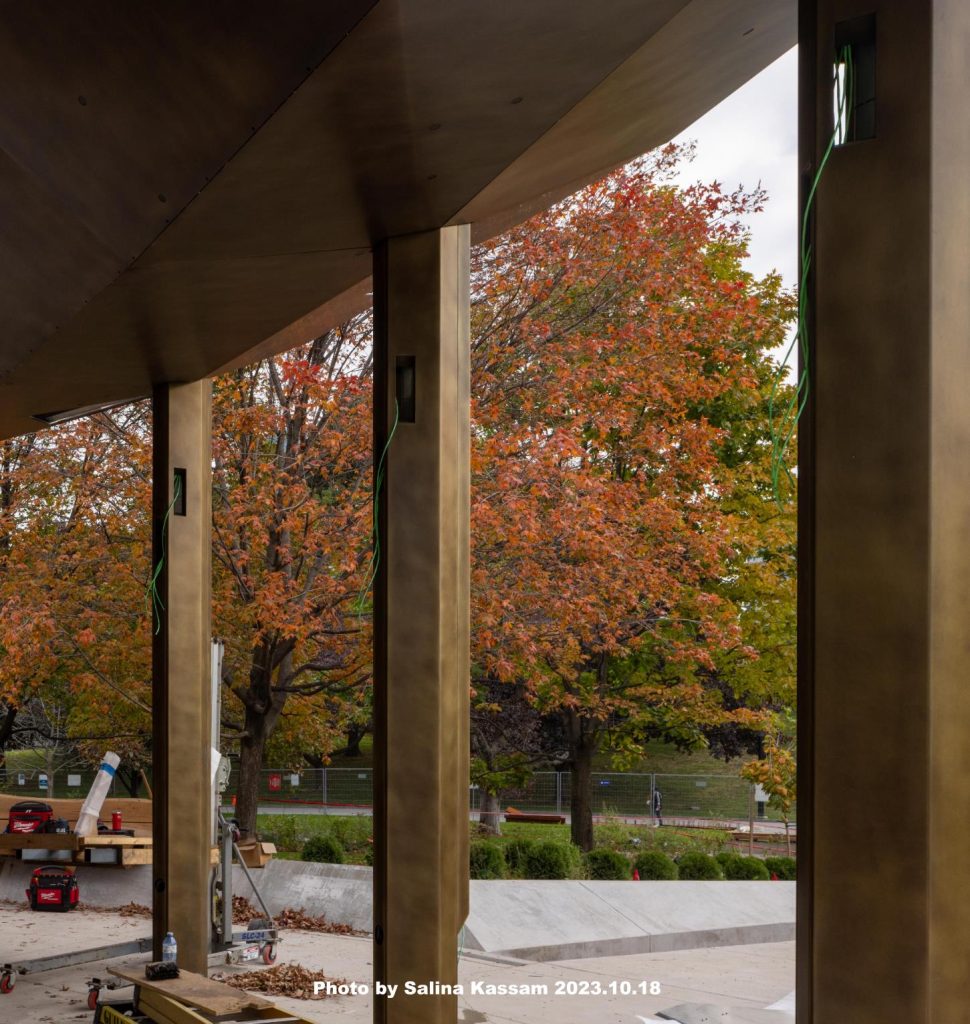
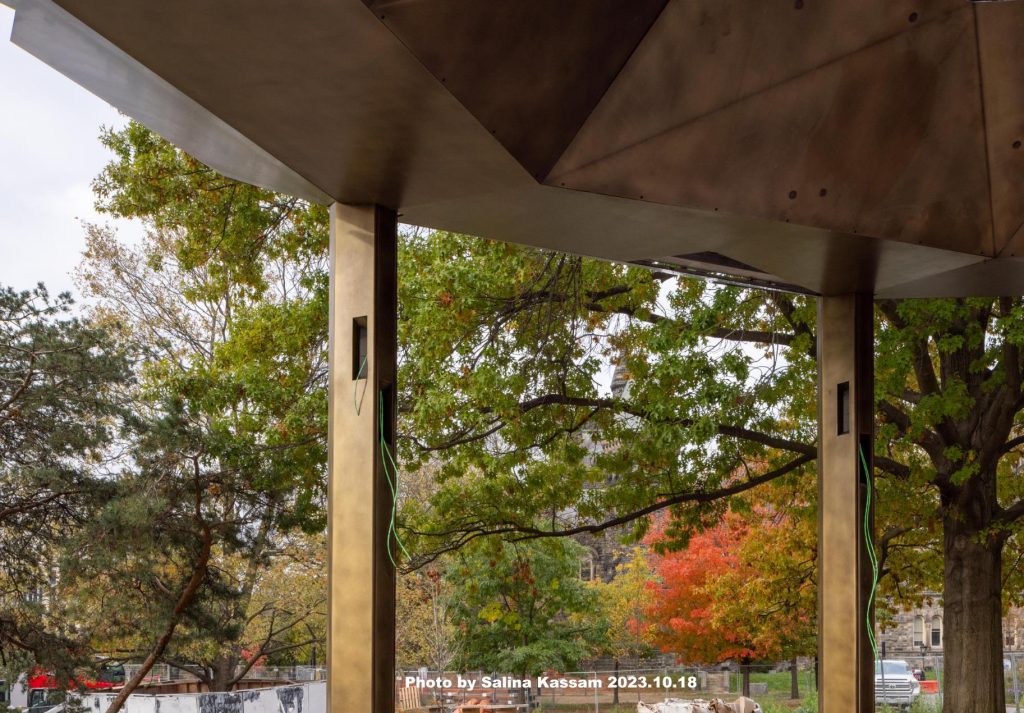
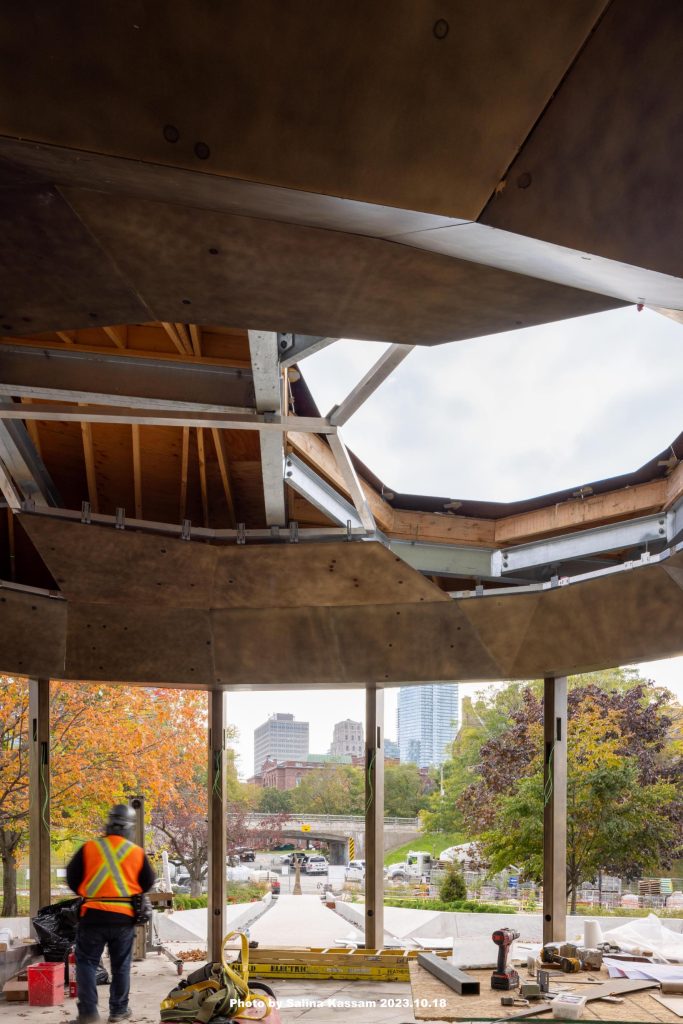
In the News
“Indigenous Landscape design draws on community input, consultations”– U of T News, December 9, 2020
“Indigenous Landscape project at U of T’s St. George campus to bring history, culture and learning to Hart House Green” – U of T News, October 7, 2019
Background
Throughout history, one of the main reasons to create greenspace, whether a garden or meeting place is to assist people to find balance in their lives through landscape. A greenspace has the potential to provide for social and spiritual needs, to heal and connect to the human senses.
The significance of this project goes beyond the material; it needs to contemplate: “What does reclamation and reconciliation look like?”
The project will be located within the Hart House Green (highlighted above), at the campus’s eastern gateway. This site area is an estimated 4,500 sm. Existing trees and topography will influence the design and programming of the site and the intent is to utilize the existing topography to the greatest extent possible. The site’s topography references Taddle Creek below the surface.
Taddle Creek
The Creek ran from headwaters near the current intersection of St. Clair Ave. W. and Bathurst St. (Wychwood Park) to Lake Ontario in the vicinity of what is now the Distillery District. Before colonization, it had been a place for various Indigenous Nations to gather and fish. Also important to acknowledge are the travel routes through the City. The trail that ran through this site would have been used by the Mississaugas and others, and would have connected with the Davenport Trail where Casa Loma is now located; this was the site of the Mississaugas Council ground.
Consultation
An Advisory Committee was established in Fall 2018 to establish a vision and scope for the project, provide guidance on the approach to broad stakeholder engagement and participate in consultant selection.
The consultation process is vitally important to this project. The University of Toronto student, faculty and staff population is widely diverse touching every corner of the world. The Indigenous population at the University and more broadly in Toronto is no less diverse and is represented by different Indigenous cultures from across Turtle Island.
Consultation has been ongoing throughout the design process. Refer to the Engagement and Events tab for a list of past in person and virtual events.
The Indigenous Landscape construction will be timed with the Landmark project.
Design
Key features and functions for Indigenous elements in the landscape were identified through consultation:
- Acknowledgement of Taddle Creek. (PDF, 115KB)
- Integration of outdoor teaching and event spaces;
- An identified Indigenous garden (perhaps a medicine garden), to be located on Hart House Green;
- Indigenous plantings (cedars, sugar maples, white pine, marker trees, sourcing plants through a local Indigenous greenhouse);
- Story-telling through language and art.
Refer to the Design Proposal heading near the top of this page for the latest design presentation.
Design Team Selection
In April of 2019 the University of Toronto initiated a Request for Proposal (RFP) to select a design consultant based on the following criteria:
- Consultation: Consultants must demonstrated experience leading consultations with Indigenous stakeholders.
- Knowledge and Understanding: Through the success of past work, the lead designer’s experience must exhibit a deep knowledge and understanding of Indigenous culture, history and design;
- Experience: the cultural aspects of the landscape design must be led by a consultant with demonstrated experience with Indigenous design.
The consultant team of Brook McIlroy’s Indigenous Design Studio, and Creators Garden’s Joseph Pitawanakwat, Indigenous Plant Specialist was awarded the project in August 2019. (PDF, 436KB)

